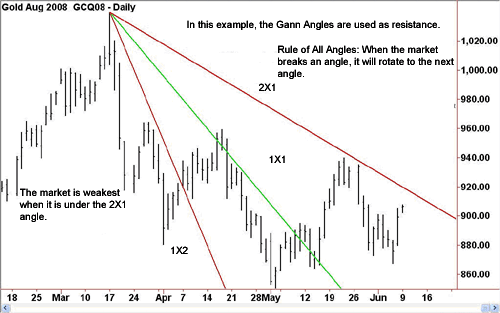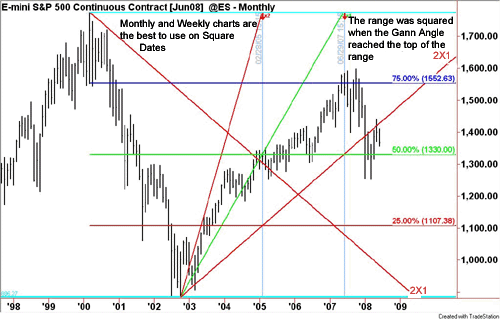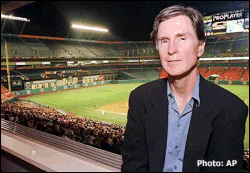We’re starting to get a little morbid around here – first with the “Is Trend Following Dead?” piece a couple weeks back, and now an “autopsy” of sorts on what went wrong at John W. Henry’s self-named firm. Some of the sales teams in the industry may prefer to avoid discussing such subjects, probably thinking something along the lines that doing so will “scare away the customers,” but to hear that John W. Henry was shutting down his eponymous managed futures shop was the kind of news that draws us like a moth to a flame.
Here was an industry stalwart in every sense of the word. A man who helped put managed futures on the map, and helped his pocket book to the tune of becoming a billionaire. He is a literal Hall of Famer, having received the Futures Hall of Fame award (whatever that is) from the Futures Industry Association. This isn’t quite Paul Simon hanging up his guitar, or Steven Spielberg deciding to get out of the movie business – but it’s close in terms of shock factor in the managed futures space.
This raises one huge question - well, actually, it raises hundreds of questions - but the big one is this: what in the world happened? We don’t just mean this week in the announcement that he was done, either. What happened in the past 8 years to transform a behemoth into a blip on the radar? Where did John Henry go wrong? Eight years ago he was managing $3 Billion and on top of the managed futures world, with a hot young upstart called Winton measuring in at only about 1/3 the size of Henry’s managed futures empire.

Why was 2004 the top for Henry, yet just a launching point for Winton and other billion-dollar managers? But most importantly for investors - how can we learn to identify when a top-tier managers’ best days are behind them?
Did he take his eye off the ball?
Excuse the all too easy baseball pun here – but the easy answer for many is to say things started to go downhill when Henry started to stray from his managed futures roots and dabble in sports, buying the Florida Marlins, then Boston Red Sox, a Nascar team and an English soccer squad. If he had only spent less time analyzing pitchers and trying to hire the next Billy Beane – and instead spent more time researching new models and risk parameters for his CTA – then things might have been different… or so the logic goes.
This would be exactly the kind of shift that an ongoing due diligence program is designed to catch, and something we wrote about not long ago in a newsletter. The general idea is that by staying in close contact with a manager, you can get a feel for when things might be going awry in a way that might impact performance. There is never a guarantee that you'll see the curve ball coming, but you've always got a better chance of it if your eyes are open.
The problem is that this logic starts to fall apart when we look at just when Henry started these other business ventures, which, according to the Disclosure Document for the JWH programs, began as early as 1987:
“Since the beginning of 1987, [Henry] has devoted, and will continue to devote, a substantial amount of time to business other than JWH and its affiliates.”
Even if we use the later date of 1998, according to a great 2007 blog post (they had blogs back then?) from the now-deceased Greg Newton (as if this story wasn’t morbid enough already), the shift of focus to include a sports empire doesn’t appear to have affected the performance (which held up until the end of 2004).
His heavy-duty distractions did not begin until he became involved in major league baseball… Henry bought the Florida Marlins in 1998.
Maybe it’s the Boston Red Sox curse, which Henry supposedly lifted by bringing a World Series title to Beantown? He became involved there in 2002, and things have been bad on the managed futures side for most of the time since.
So while the brains of the operation shifting his focus to baseball seems like an easy due diligence red flag, the numbers don’t really support it as the cause of the decline. Regardless, any investor after the year 2000 would have known of this concern.
A more nuanced “taking his eye off of the ball” argument – and something to consider when conducting due diligence on a manager – is the number of programs in the stable. For JWH, the answer is: quite a few. There are 17 different “capsule performance” tables in the JWH D-Doc. This can be another worry in the due diligence process – can a manager run 17 world-class programs at once? And if not, which would you rather see: 17 mediocre programs, or 1 excellent one?
It’s a plausible story, but in this case, perhaps a more likely culprit in terms of “who’s minding the store” is the high manager turnover.
Manager turnover
So if the boss isn’t always running things, you had better have a very high level of confidence in whoever is picking up the slack. Leadership transitions are often due diligence red flags, but as it turns out – this one isn’t all that straightforward, either.
We’ll borrow heavily from Greg Newton in parsing the Disclosure Document and news clippings on Henry company hires here:
Like those stomach-churning drawdowns, management turnover is nothing new at JWH. Before Rzepczynski’s record tenure ended in January [Others shown the door at much the same time as Rzepczynski included long-time marketing executive Ted Parkhill; Bill Dinon, head of sales; and Andrew Willard, director of technology], past holders of the president title included Verne Sedlacek, now president and chief executive officer of Commonfund; Bruce Nemirow, now a principal of Capital Growth Partners, a third-party marketing company; and Ken Tropin, who, after a distinctly less than amicable split with Henry, went on to found Graham Capital Mgt Inc in 1994. That firm’s assets passed JWH’s several years ago.
Between Nemirow and Sedlacek, Peter Karpen, a former chairman of the Futures Industry Association; and David Bailin, now head of alternative investments at US Trust, held similar responsibilities, without the title of president.
It’s easy to look back on it in hindsight and say that a bunch of people jumping ship in 2007 was a bad sign, but consider how it looked in the moment: the person leaving had been there 9 years, while the person replacing him had been there 12 years. That certainly doesn’t look so bad, especially when compared with a program (Winton) which is just getting started or a management team with 5 years or less of experience.
Adapt or Die (but careful with those adaptations)
Did hubris play a part? Again, from Greg Newton:
JWH generally has not changed the fundamental elements of the portfolios due to short-term performance, although adjustments may be, and have been, made over time. In addition, JWH has not changed the basic methodologies that identify signals in the markets for each program. JWH believes that its long-term track record has benefited substantially from its adherence to its models during and after periods of negative returns; however, adherence to its strategy may lead to prolonged periods of market losses and high risk, according to its current disclosure document.
Did a stubbornness to adhere to the models which had worked in the 80s, 90s, and start of this century cause those models to become outdated? That seems doubtful. As we say around here, “Systems don’t break, they just become more risky.” It would appear that this is exactly what happened to JWH. Of course, some on the risk management side of a successful CTA might say that a model becoming more risky is the same thing as that model breaking. After all, the risk is the most important part. And we wouldn’t argue too much there.
In the end, it looks like it may have been the worst of both worlds for Hentry: sticking with the base models but tweaking the position sizing. Per page 34 of the JWH D-doc, we learn that the position sizing has been changed 16 times across 9 programs since 2003. And these weren’t all position size reductions – many were increases. On one hand, if you are taking losses at a high trading level, then trying to gain those losses back at a reduced level, it’s going to take much longer to return to profitability. But if those losses we due to unresolved flaws in your trading method, raising your position sizes is just doubling down on a losing strategy.
Live and Die by the Volatility
Most of those in the industry will tell you John W. Henry was simply too volatile for modern tastes, and you can see when taking a look at his programs’ track records some big numbers on both sides. Take the financials & metals 36% annualized volatility for example, or the multiple years with above 40% gains or more than -17% losses, and you can see that Henry’s model was one of high risk for high return.
But it’s more than just the fact that the JWH programs were volatile – what stands out is how much more volatile they were than “normal” and the fact that they were getting more volatile compared to the competition.

The above look at the ratio between the JWH composite’s rolling 12mo annualized volatility and that of the BarclayHedge CTA Index shows that the JWH programs were about 2.25 times more volatile, on average, than the index during their boom times (the first 20 years), and had jumped to 3.49 times more volatile, on average, in the past 8 years.
Again, this is something more easily seen with hindsight, but this is easy enough to analyze in real time. It’s especially concerning how volatile a program is not just in absolute terms, but in relation to its benchmark as well. And if it’s 5 times more volatile – as JWH was a few times in 2008 – you had better be sure you are getting 5 times more the return as well.
Which brings us to…
You have to make money
At the end of the day in this business (or any other), no amount of name recognition nor bulletproof due diligence can make up for the failure to make money for your clients over a five year period, and that, more than anything else, led to John W. Henry closing up shop.
Consider the Financials & Metals program again. Heading into 2005 the program had never experienced back-to-back losing years. In fact, only once had the program suffered more than 1 losing year in any 7 year period (losing two out of three between 92 and 94). The program then saw losses in three consecutive years between 2005 and 2007, and when including this year’s down performance, the program has now lost money in 5 of the past 7 years.

The three years of losses ending in 2007 are likely what led to Merrill pulling the plug in that year (right before the program experienced a big bounce back, but that’s a topic for later), but the table above shows that something is materially different in the past eight years when compared to the first 20 for the Financials & Metals program.
A CTA’s job is twofold. First, to generate absolute return performance, so that a customer who gives the program at least three years to do its job will be rewarded with positive performance. And second, to stay ahead of the competition.
It’s no easy task, to be sure, and John Henry’s gold-lined trash cans are probably filled with the brochures of contenders who tried and failed. But since 2004, it has been Henry’s programs which have failed on both counts. They haven’t remained positive across the bulk of the rolling three year periods, with some of the rolling three year returns falling below -20%. And while those years haven’t been kind to many other CTAs, JWH failed to stay ahead of the competition. They spent most of the past eight years with rolling 36 month returns below that of the BarclayHedge CTA Index.

Henry was lagging the index and seeing large negative 36 month returns as early as 2005, meaning there were chinks in the armor that appeared well before Merrill pulled the plug in 2007. But pulling the plug on an underperforming advisor has to be one of the hardest things to do for the individual investor. Especially when you are considering pulling the plug on a Hall of Famer.
It’s all Relative
It’s a zero sum game, as managed futures detractors like to say. But the reality is that it is not that black and white. There isn’t always one clear winner and one clear loser. It’s more like a few thousand winners, a few thousand losers, and many more in between.
The job of the investor, then, isn’t necessarily to find the winner and avoid the loser, but to find the one doing a better job of winning than the others. What does that mean? Providing return with less volatility, more consistency, experiencing smaller drawdowns, shorter drawdowns – the list goes on.
Which brings us back to Henry. You see, while he is up (big time) in the zero sum game overall, the biggest takeaway for us following this pseudo-autopsy on the John W. Henry programs was in how the program started to become one of the worst winners according to our ranking algorithm.
The biggest warning flag to us was seeing how his ranking fell despite the program going on to make new equity highs.
You see, we don’t just rank on performance – we rank on comparative performance, across many time frames, and incorporate risk metrics to normalize the performance across programs. So you not only have to do well – you have to play the game better than the next guy in terms of controlling risk, delivering consistency, and more.

The fact that the John Henry programs started to fall in our rankings after their 1999 drawdowns is a sign of poor relative performance. In other words, they weren’t just doing poorly because of a bad managed futures environment – they were doing poorly AND performing worse than their peers were in that same environment. You can get away with rough years, but you can’t do worse than your peers for an extended period of time and hope to stay in the game.
Lessons Learned:
Don’t cry for Henry – he’s doing just fine: still worth $1.5 billion, and the 389th richest person in the US according to Forbes.
But do pay attention to the potential lessons within this story:
1. Past performance is not necessarily indicative of future results. It’s not just a disclaimer, and the performance of the Henry Financials & Metals program shows the reality of that – with winning years in 17 out of its first 20 years followed by losing ones in 5 out of 7.
2. Know what sort of program you are getting involved with. John Henry’s programs were notoriously high volatility, and willing to take larger losses in exchange for home-run type years - meaning losses of -20% and more shouldn’t have surprised anyone.
3. Beware the big brokerage house (Merrill Lynch types) selling a big brand name managed futures program. While Henry was a poster child for managed futures as late as 2004, there were warning signs for his programs well before that. The big brokerages believe they are being conservative when selecting the well-known program with a long history of success, but they could be better served identifying lesser-known programs with the risk and reward profile their clients want. They are often late to the party and late to get out.
4. Henry is still a Hall of Famer. Yeah, we know… we said there were warnings, his main program has our lowest ranking, and we wouldn’t recommend a JWH program for our clients. But having said all that, he also made a lot of money for a lot of people in his early days (and knowing how these things cycle he’ll likely go on to make himself another small fortune just by trading his own money). We’ve never met him, and don’t know what sort of person he is – but we’re willing to bet that many of the clients involved with him during the ‘80s and ‘90s still think he’s worthy of that hall of fame distinction.











